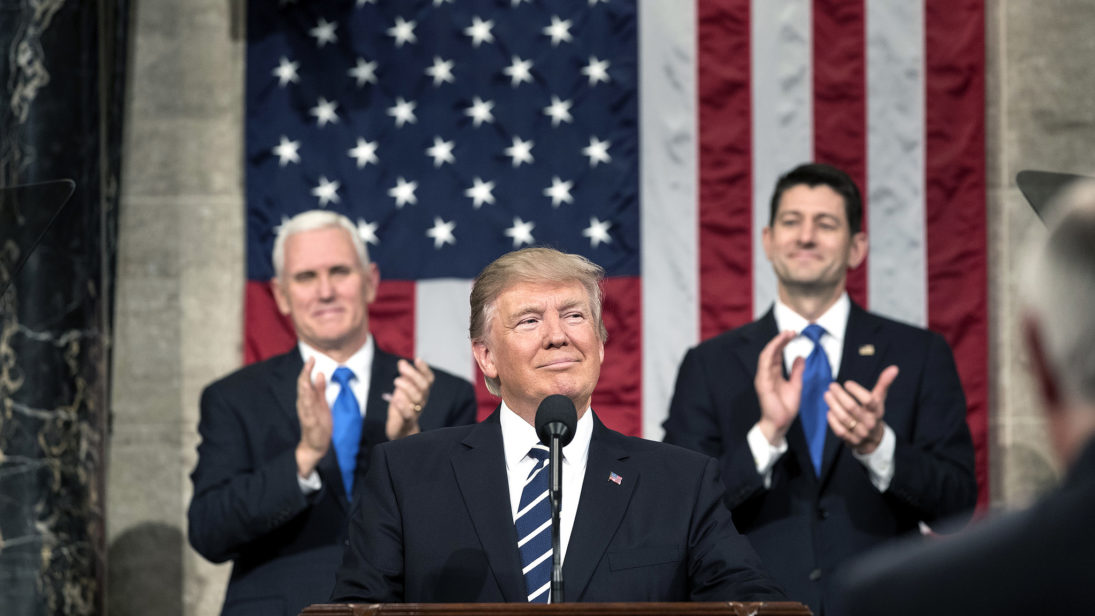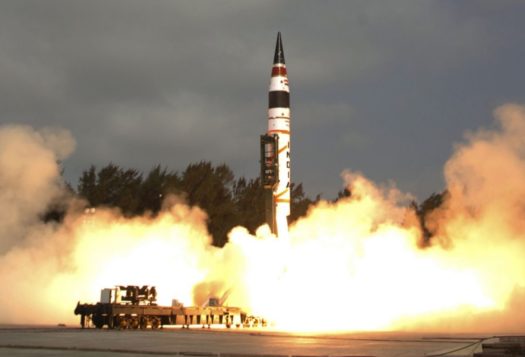
Pakistan is the only ally that the United States has among Afghanistan’s neighbors. Yet, last year, the White House announced a new South Asia strategy that called on Pakistan to “demonstrate its commitment to civilization, order, and to peace” by assisting U.S. efforts to quell the war in Afghanistan. Since then, most of the pressure has been rhetorical: aside from the suspension of already-dwindling security assistance, the United States has threatened to revoke Pakistan’s status as a major ally and suspended longstanding military training programs. Pakistan’s support for the United States’ efforts is vital to a sustainable peace in Afghanistan. Beyond that, a stable and flourishing Pakistan is even more vital for global stability in the medium to long-term. While President Trump’s India strategy is a long-term investment in a burgeoning partnership, his Pakistan strategy is myopic, short-term, and counterproductive. In practice, it is a hodgepodge of minor annoyances, and it is unlikely to produce any meaningful results.
America’s Growing Irrelevance in Pakistan
On the first anniversary of President Trump’s South Asia strategy, the United States is at risk of becoming irrelevant in Pakistan. There are numerous reasons for this, but for now we mention ten. First, America has steadily narrowed its relationship with Pakistan to a solitary priority: pressuring Pakistan to attain military and counterterrorism objectives, primarily in Afghanistan. Second, America has apparently lost its appetite for these national security and geopolitical objectives, as it seeks a respectable exit from Afghanistan. Third, partly because of this declining interest, the United States has reduced economic and military support for Pakistan, thereby pushing Pakistan closer to its main economic competitor, China. Fourth, the political party in Pakistan that was historically most aligned with American values and interests—the Pakistan People’s Party (PPP)—has declined from the greatest political force in the country to a regional party concentrated in the province of Sindh. Fifth, the U.S. State Department appears to be in a malaise, if not in turmoil, and is unlikely to invest in the recalibration, research, and engagement necessitated by the rise to power of an unknown entity—the Pakistan Tehreek-e-Insaaf (PTI)—in Pakistan’s recent general elections.
Admittedly, America’s relevance in Pakistan is unlikely to keep President Donald Trump up at night. But it should. The President’s statements about Pakistan in last year’s South Asia strategy indicate an intense myopia, in which Pakistan’s main importance is its role in combating the Taliban in Afghanistan.
Sixth, by distancing itself from Pakistan, the United States has diminished its ability to play a constructive role in resolving any issues between Pakistan and its neighbors, thereby encouraging Pakistan’s new government to deal with these neighbors either bilaterally or through an alternative arrangement. Seventh, as America isolates traditional allies in Europe through unconventional political and economic decisions, it likely lessens its ability to influence Pakistan indirectly through these allies. Eighth, as America expands and fortifies its relationship with India, it increases the political cost of any pro-American political forces operating in Pakistan. Ninth, China’s commitment to its One Belt One Road (OBOR) program virtually guarantees that Chinese influence will grow in Pakistan, and will partly crowd out other foreign influences. Finally, and speculatively at this stage, Pakistan’s new government is unlikely to seize the initiative in rescuing the country’s relationship with America. The PTI appears to be a populist and inward-looking party: focusing on social welfare, austerity, human development, and law and order issues, while consistently criticizing U.S. drone strikes on Pakistani territory and the erstwhile U.S. refusal to negotiate with the Taliban.
Admittedly, America’s relevance in Pakistan is unlikely to keep President Donald Trump up at night. But it should. The President’s statements about Pakistan in last year’s South Asia strategy indicate an intense myopia, in which Pakistan’s main importance is its role in combating the Taliban in Afghanistan. Pakistan and Afghanistan have suffered more terrorism than the United States by any conceivable metric. However, as any Pakistani will tell you, terrorism ranks relatively low in the list of Pakistan’s problems and priorities, behind such mundane concerns as the economy, education, infrastructure, healthcare, the energy crisis, climate change, law and order, and bureaucratic reform. Pakistan is the sixth-largest country in the world, with comfortably the lowest median age and highest fertility rate in the top six; it has the sixth-largest standing military in the world, backed by nuclear weapons. Nestled next to China, India, Iran, Afghanistan, and the Persian Gulf, it can claim to be one of the most geostrategically important countries in the world. Historically, Pakistan has been an important ally to the United States, notably during the Cold War and the so-called “War on Terror” after 9/11. Over the medium to long-term, the potential benefits of continuing to engage with Pakistan—and equally, the potential costs of not engaging—are enormous. Because of its sheer size and location, Pakistan is likely to have a growing—and, thus far, unpredictable—impact on global politics, economics, and security.

Benefits and Challenges to Engaging Pakistan
The way to make an unpredictable Pakistan predictable is to engage with it early and often. It is always easier to maintain an alliance than to build one. President Trump’s South Asia strategy speech suggested that Pakistan “has much to lose” if it did not cease support for the Taliban and back U.S. objectives in Afghanistan. However, threats of this kind tend to have unintended consequences as they ripple through the system. Substitutes become more attractive. If America continues to weaken its relationship with Pakistan, then the cost will not simply be that Pakistan will cease to do what it is doing, but rather that it will begin to act in ways that run against U.S. interests. The consequences to the United States of an even closer Pakistan-China nexus, an unstable Pakistan, or some other reconfiguration, are unknowable, and for that very reason, prohibitive. As Secretary Clinton reminded us in 2009, the last lull in U.S. engagement with Pakistan saw the rise of the Taliban.
If America continues to weaken its relationship with Pakistan, then the cost will not simply be that Pakistan will cease to do what it is doing, but rather that it will begin to act in ways that run against to U.S. interests.
Even if the United States does proactively seek to make up lost ground in this relationship, or even if Pakistan takes the initiative, restoring the alliance to its Cold War glory is a daunting and complex proposition for two reasons: the new government in Pakistan and China’s growing influence. The new government does not have the rapport with the United States that the PPP and Pakistan Muslim League did, so that much of the groundwork will have to be laid anew. Meanwhile, Chinese influence complicates the U.S.-Pakistan relationship in multiple ways. Where both China and the United States want to influence Pakistan in the same way, they are likely to free ride, each expecting the other to provide most of the carrot. Where each wants to influence Pakistan in the opposite way, they are likely to invest a lot in return for little, as the American carrot is cancelled out by the Chinese. Multiple suitors are prone to create such Prisoners’ Dilemma-like scenarios.
Problem of the United States’ Own Making
Where the carrot promises little, perhaps the stick can promise more. That hypothesis may appeal to President Trump at a visceral level. But it shouldn’t. Certainly, Pakistan is economically distressed, in the throes of inflation, trade deficits, and eye-popping debt. The country has a habit of spending more than it makes, and borrowing from the International Monetary Fund and others to make interest payments on earlier loans. The United States has tremendous influence with these lenders, and may use it to threaten Pakistan with an economic apocalypse if it fails to “do more.” However, the size and geostrategic importance of the country make it difficult to determine the fallout from such a punishment: whether Pakistan will close its economy, or some other power will attempt a rescue, or the country will destabilize, sending multifarious ripples across the world.
There was a time in the not too distant past when the United States had a multipronged and deep relationship with Pakistan, recognizing its importance beyond the context of Afghan warfare.Most of the reasons for its potential irrelevance in Pakistan are of its own making, and at least theoretically reversible.
There was a time in the not too distant past when the United States had a multipronged and deep relationship with Pakistan, recognizing its importance beyond the context of Afghan warfare. Most of the reasons for its potential irrelevance in Pakistan are of its own making, and at least theoretically reversible. Reversing these moves with a PTI-led, post-OBOR Pakistan is certainly difficult, and likely unpalatable for the president, but we believe that such a reversal is vital for both American and global interests.
Editor’s Note: The United States’ Strategy in Afghanistan and South Asia, announced one year ago by U.S. President Donald Trump at Fort Myer military base in Arlington, Virginia, marked a shift in the nature of U.S. presence not only in Afghanistan, but across the region. In this four-part series, Neha Dwivedi unpacks how the South Asia strategy influenced the Afghan peace process, Bismellah Alizada explains how the policy influenced the political and security situation in Afghanistan, Shreyas Deshmukh unravels its impact on Indo-U.S. relations, while Uzair Kayani and Sikander Shah delve into its effect on U.S.-Pakistan ties. How effective were the actions undertaken by the United States after the South Asia strategy was announced, and where is U.S. policy heading one year later? Read the series here.
***
Click here to read this article in Urdu.
Image 1: The White House via Flickr
Image 2: Alex Brandon via Getty


